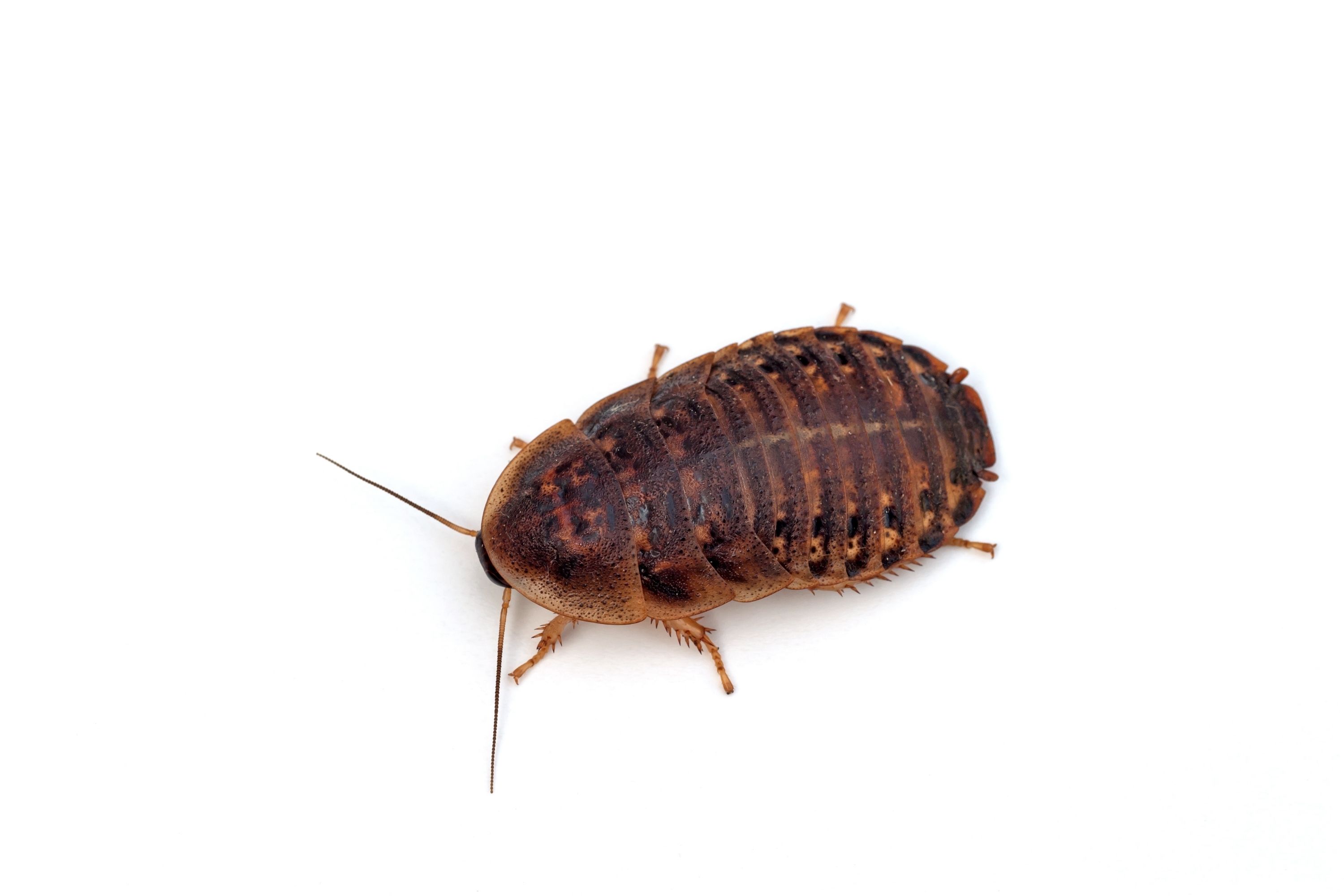Dubia roach
(Blaptica dubia)

Description
Blaptica dubia, the Dubia roach, orange-spotted roach, Guyana spotted roach, or Argentinian wood roach, is a medium-sized species of cockroach which grows to around 40–45 mm (1.6–1.8 in). They are sexually dimorphic; adult males have full wings covering their body, while females have only tiny wing stubs - their tegmina (forewings) being around a fourth of their body length. Adults are dark brown to black with somewhat lighter orange spot/stripe patterning sometimes visible only in bright light. Coloration differs slightly with environment and diet from one colony to another. Blaptica dubia are partially ovoviviparous, giving birth to live young after eggs hatch inside the female, and can give birth to 20 to 40 nymphs per month under favorable conditions. The Dubia cockroach is found in southern parts of South America. Documented specimens have been found in Brazil, Argentina, and Uruguay. Ideal temperature range is the higher end of a 24°C - 35°C range. They will not breed below 20°C. They will not molt successfully if the humidity is too low. Dubia roaches can tolerate lower humidity than many other roach species. This species of roach will also sequester more water in its body when well fed upon fruits and water will be released at times of stress. In captivity, enclosure humidity is less important than a supply of high moisture foods, negating the need to mist the enclosure at all when compared to some other tropical pet insect species. Captive habitats should be kept clean and dry in order to have fecal droppings dry and not provide a medium for bacterial or fungal growth. Vertically stacked egg crates greatly help in this, as does good airflow. While rarely known to fly, adult males have fully developed wings and pigmented musculature typical of cockroaches able to meet the rapid energy requirements of sustained flight. In laboratory test launches from a ramp 2.5 m high, adult male B. dubia were able to right their dorso-ventral position and rapidly deploy their wings to control and direct their descent; however, active powered flight did not maintain or increase their altitude. Adult females have only rudimentary forewings and lack the muscles required for flight, and showed no flight control in test launches.
Taxonomic tree:







